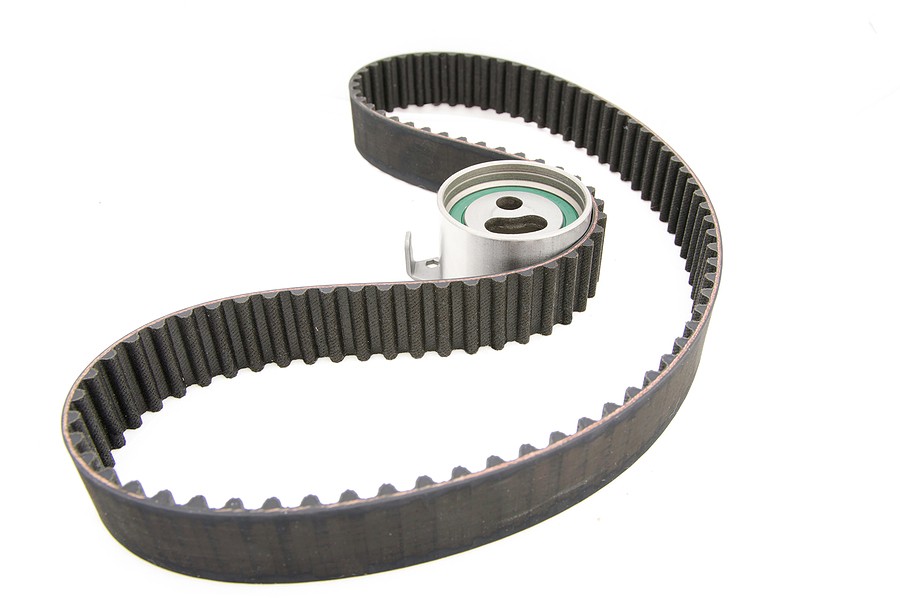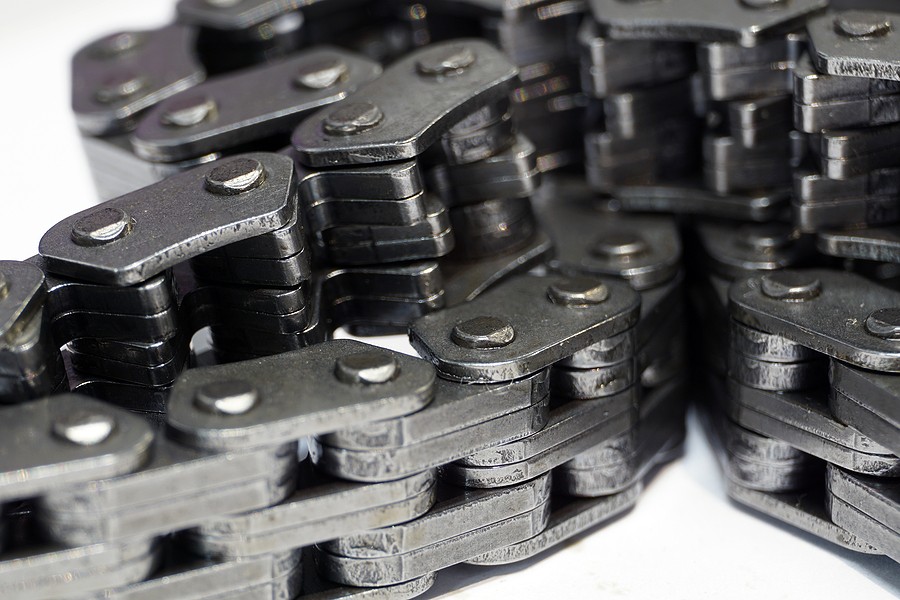The timing belt is an important component of the internal combustion engine which you should pay attention to when maintaining your car. While this belt is made of strong and durable material, unfortunately, it can wear out or snap over time. When this happens, the belt will break during the engine's running process, and this will cause the engine to stop.
Most people know that they should regularly change their car's timing belt, but many don't know how to save money on the replacement. However, there are a few simple ways to save some money on this important maintenance task. Here are some tips to help you get started.
The importance of the timing belt is
The timing belt is a vital component of your car's engine. If the timing belt snaps, it will either cause the piston to collide with the open valves (causing great damage) or stop altogether, causing major problems within your engine.
While timing belts are made of durable materials, they wear out over time and should be replaced periodically throughout your car's life; usually between 60,000 and 100,000 miles.

What are the different types of timing belts?
There are a few different kinds of timing belts to be aware of. First, the general timing belt may need to be replaced every 50,000 miles (usually between $300 and $500). On the other hand, the continuously variable transmission (CVT) belt should only need replacement every 100,000 miles (usually between $350 and $550).
The third type of belt you might run across is the timing chain. Timing chains only need replacement every 100,000 miles or more (usually between $300 and $500) depending on your vehicle. Although these belts are usually durable enough to last up to 150,000 miles, they are not recommended; usually due to the cost of replacement.
The best time to replace the timing belt
Many car owners believe that you must wait until the recommended mileage (usually between 60,000 and 100,000) before replacing your car's timing belt. However, most professionals recommend replacing your timing belt following manufacturer recommendations which are usually at every five years or every 50,000 miles.
Suppose you're not sure about your car's manufacturer recommendations. In that case, it is best to check with a reliable mechanic who can help determine the ideal time to replace the timing belt on your specific car model.

How much does it cost to replace the timing belt?
Replacing the timing belt may not cost as much as replacing the engine, but it is still an important maintenance task that you should consider.
The average timing belt replacement costs between $400 to $900 depending on your location and whether or not you have a mechanic replace the timing belt for you.
However, timing belt replacement cost differs significantly depending on your vehicle's brand. For instance, a replacement on a Volkswagen may cost as much as $1,600, while a replacement for an Audi can be as little as $600.
Why does the timing belt replacement cost vary from one car to another?
There are several factors that affect the overall price of replacing a timing belt which include:
- The type of vehicle you drive
- The engine size
- The amount of labor involved in the replacement process
- The type of timing belt required (Pulley or Tensioner)
- Type of driving you do (city vs. highway, mostly stop and go traffic vs. mostly highway driving)
How To Save Money On Timing Belt Replacement?
If you're looking for saving money on the timing belt replacement, luckily, there are some ways to do so, including:
1- Do the replacement yourself
The first and most important tip to save on timing belt replacement is to do the replacement yourself. Replacing a timing belt is not extremely difficult for fairly handy car owners. If you have the right tools and follow our step-by-step instructions on how to replace a timing belt, then you can easily save hundreds of dollars by doing it yourself.
2- Do the replacement with parts from your dealer
You can save a considerable amount of money on the replacement if you use the timing belt from your car's manufacturer. However, in most cases, you have to replace all related parts simultaneously due to the complexity of modern engines. If you're not sure which parts to buy or whether they are compatible with your car model or year, then bring your car to a trusted dealer and ask them to help you choose these parts.
3- Ask for discounted rates
If your local mechanic shop offers discounts on labor fees, try asking them for their best price on replacing the timing belt. You can also ask about any special deals that might be available since many shops offer discounted prices during specific times throughout the year (such as Labor Day deals).
4- Consider timing belt replacement service contracts
In most cases, you can buy a smooth and hassle-free experience by purchasing a timing belt replacement service contract from reputable repair shops. In addition to saving money on the replacement time, many mechanics will also replace other parts that may be worn out along with the timing belt to prevent problems down the road. This is especially useful for avoiding major repairs in the future since many of these parts are quite expensive.
5- Use non-OEM (original equipment manufacturer) parts
While using OEM parts for replacing your car's timing belt is strongly recommended, it is important to note that some aftermarket or remanufactured products work just as well as original equipment manufacturer parts. With that said, you should always install parts specifically designed for your specific model and year of car to avoid any issues with the fit.
6- Get a second opinion
When it comes to timing belt replacement, it is not uncommon for mechanics to recommend replacing other related parts simultaneously. If your mechanic recommends replacing certain parts or checking them during the process, try getting a second opinion from another mechanic since some of these additional costs might be unnecessary.
7- Trade in your current car for one with a timing belt placed in a better location
While this tip does not refer directly to saving money on timing belt replacement, there are many benefits to trading your current car model for one that has its timing belt placed in a better location. For example, some vehicles have their timing belts located inside the engine where they are prone to damage due to leaks or high-pressure system problems.
8- Buy or lease your next car with a timing belt placed in a better location
If you're looking for a new model with its timing belt located in a better position, then try buying or leasing one that comes with this feature. This is especially true if you tend to drive long commutes since many modern cars require the replacement of timing belts every 60,000-100,000 miles (about 100k km) .
9- Implement DIY timing belt replacement
If you still think that you can successfully replace your car's timing belt by yourself, then check out these step-by-step instructions on how to replace a timing belt. By following these simple steps and taking your time, you should save hundreds of dollars during the process.
10- Spend some time researching
Spend some time online by looking for coupons and promotional offers for timing belt replacement. Mechanics might offer a discount on this service in most cases, but the amount is usually not that significant.

Common problems with the timing belt
There are very common problems that you might deal with regarding timing belts. Let's take a closer look at some of these problems: –
Broken timing belt
A broken timing belt will prevent the engine from running. This can damage pistons, valves, and the cylinder head.
Broken timing belt idler pulley
A broken timing belt idler pulley can cause the timing chain to run off the track, which will lead to damage of pistons, valves, and the cylinder head.
Broken water pump
A faulty timing belt often causes water pump failure. Water pumps are responsible for providing cooling to your engine. In most cases, a broken water pump will result in overheating or engine stalling due to a lack of cooling
How To Save Money On Timing Belt Replacement FAQs
this section answers common questions about timing belt replacement service and the cost (how much it will cost to replace timing belt).
Is replacing a timing belt worth it?
Yes, replacing a timing belt is well worth the investment. For example, if your car's timing belt breaks while you are driving it, then there is a high chance that you'll end up with costly damages to pistons, valves, and cylinder heads. This means that your engine will have to be replaced altogether.
How can I make my timing belt last longer?
Making your timing belt last longer can be achieved by driving your car at its slower speeds and avoiding driving it on highways. This is because the high speed of travel and constant vibrations might cause damage to your engine. It is also important to keep an eye out for any oil leaks near your engine since they could lead to gaskets problems.
Can a timing belt last 200 000 miles?
A timing belt can last up to 200k miles if you take good care of it. Replacing the timing belt every 100k miles is ideal. Still, many people wait for their cars to reach 150-160 000 miles before getting them replaced, which isn't usually a good idea since failing to change the timing belt could cause expensive damage that will cost more than the belt replacement itself.
Is it possible to replace the timing belt yourself?
Replacing a timing belt is not an easy task and should be done by professionals. However, you can save some money on labor if you attempt to do it on your own but make sure that you thoroughly understand what you are doing or get help from someone who does.
Does the timing belt give a warning?
The timing belt does not warn when it is about to break. This is why it's important to get your timing belt replaced every 100k miles or 60k km.
What are signs your timing belt needs to be changed?
Some signs of timing belt problems include noisy engine, rough idle, and problems with starting your car. If you suspect that your timing belt is on its way out, then it's best to get it checked immediately.
Does the timing belt affect shifting?
No, the timing belt does not affect shifting.
How long does it take to replace the timing belt?
It usually takes between 5-8 hours of work to replace the timing belt on a car. If you have your car's engine replaced, then expect that the job will take twice as much time. However, if you are trying to save money on labor costs, you can replace the timing belt yourself.
Can the timing belt last 20 years?
No, a timing belt can't last for more than 20 years.
Do I need to replace the water pump with a timing belt?
In most cases, the water pump is usually replaced when you replace your timing belt. However, in some instances, it might be a good idea to get them replaced separately to make sure that everything is going well with your engine.

Conclusion
A broken timing belt can lead to major damage, which is why you must be proactive about replacing your car's timing belt. Fortunately, there are many ways to save money on the replacement process.
From getting a second opinion or using non-OEM parts to trading in your current vehicle and buying/leasing one with better positioning of the timing belt (or even locating it inside), these tips should provide some relief when it comes time to replace this crucial component of your engine.



